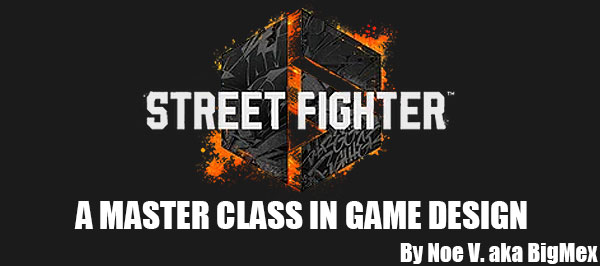
In the previous blog I talked about the importance of good storytelling with the Street Fighter II: Animated Movie. When you wanted to bring audiences into the world that you were creating you had to show, rather than tell. I used the example of Ryu wandering through the streets of Kolkata India. He tripped a kid by accident, and paid to replace her food. The kid returned later in the film, and was injured by a soldier. Ryu beat up some assassins, and made sure the kid got medical attention. We were shown two sides of Ryu, compassion, and warrior in a short amount of time. The plot in the World Tour in Street Fighter 6 was much deeper than in most fighting games. The team at Capcom needed to show multiple elements of what was happening in the tiny fictional country of Nayshall. When you arrived in town you immediately ran into a little kid that was getting hassled by some bullies.
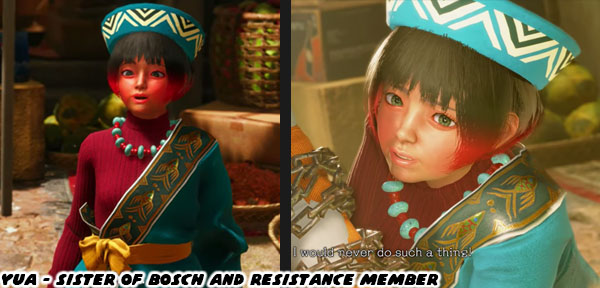
The little girl turned out to be Yua, the sister of Bosch. She was worried about her brother. He had gone missing. You were aware of this, but also wanted to find out where he had disappeared to as well. She hinted that there were a group of people he was aligned with, but couldn’t say anything else about it. Capcom was planting the seeds of a resistance group in the country. The thing was that we did not know what they were fighting for, or against. We would get details about it as the game progressed.
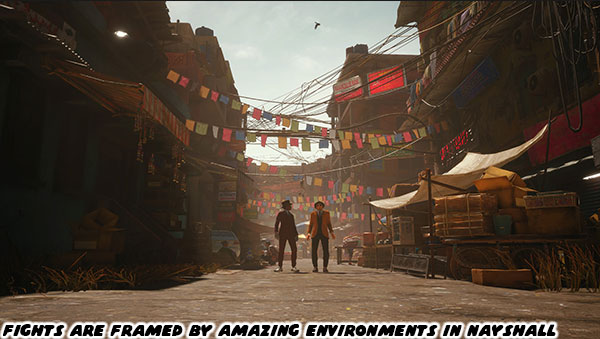
As with Metro City the entire map was not open from the beginning. This forced players to wander, and complete side missions. Tracey, Alice, and Ryan were also in town for the upcoming tournament. They made sure that you were still keeping up with your training. Capcom was doing an exceptional amount of world building in Nayshall. There was no detail overlooked in the small town. The residents were all dark skinned, which was a nice change of pace considering how most games were afraid to show melanin on characters. The NPCs in Nayshall all had names that sounded authentic including Gianprakash, Nima, and Palisha. In Metro City the names were more western.
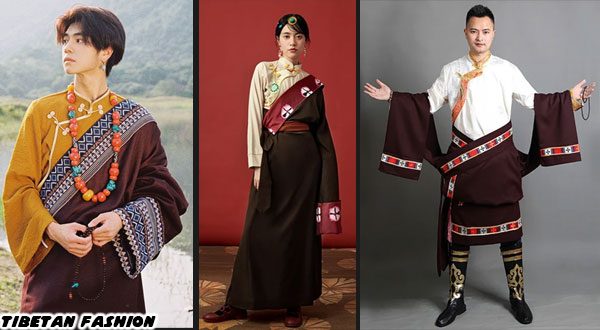
The residents wore clothing that was reminiscent of classic
Tibetan fashion. Several NPCs mentioned that the town was made up of former sheep herders. Many were nomadic. It would explain when many of them wore a chuba. A long sheepskin coat made of thick Tibetan wool worn by many of the nomadic peoples of high altitude in the cold mountains of Tibet. Nayshall was at the base of a mountain, Mt. Vashal specifically, and we would eventually climb it by the end of the game.
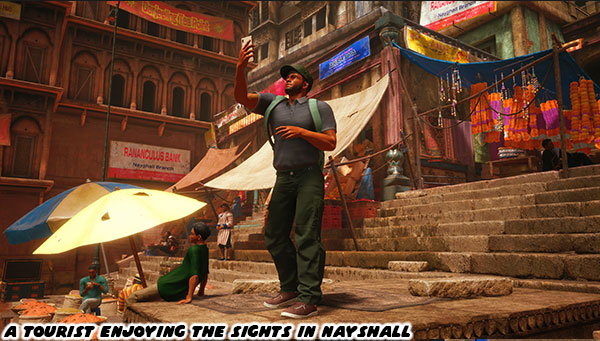
The residents mentioned that tourism had been picking up since they were becoming industrialized. The announcement of a fighting tournament was also bringing in a lot of investors, and new business. It was also bringing in a lot of criminal activity. The majority of the gangs in Nayshall were exclusive to the stage. The Dash delivery characters, and drones were the only type that were shared between Metro City, and here. The new gang members costuming, and theme made sense for the area. The country was starting to get western money invested in it. Certain gangs like the gamblers were dressing in western suits, and attacking tourists, the rest wore more traditional outfits.
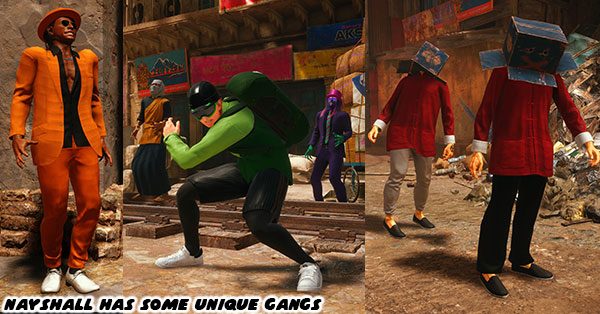
Nayshall was a gorgeous country. The more I explored, the more I discovered. I wondered if this was what Ryu felt like as he traveled the globe. Capcom had done an amazing job putting us into the story. Of making us the center of a universe much deeper than any other fighting game. After spending hours, and hours playing, and leveling up I came to the realization that I was enjoying this game far more than God of War Ragnarok from 2022. Modern AAA titles that had massive open worlds needed to go above-and-beyond with details. They had to convince players that these worlds had histories, that they were lived in. Whether you were traveling through Gotham City, New York City, or Svartlalfheim from the nine realms then you needed to believe this place had existed for ages.
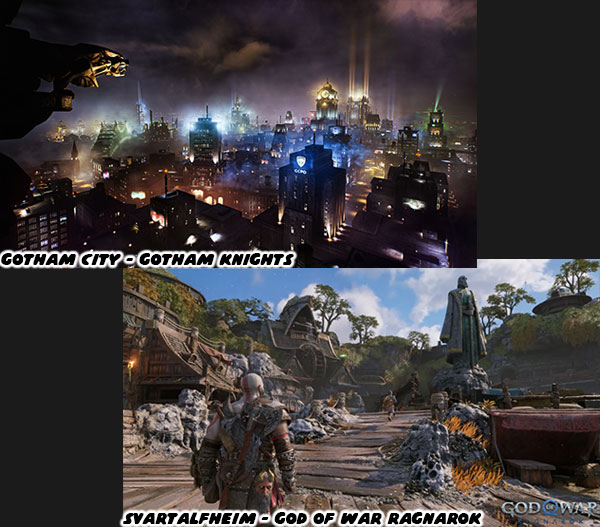
Of the two previously mentioned games Gotham City felt more alive in the Batman series because it was populated with pedestrians, and gangs. The same applied to the recent Spider-Man games, and SF6. God of War Ragnarok had a number of massive environments that you could travel to, but they were sparsely populated, and only with monsters. In fact one of the things that infuriated me with GOWR was when Kratos arrived to Svartlalfheim, the land of the dwarves. You saw these people only once, and then they all ran away. Speaking to you only from behind closed doors. It was like this in every realm you visited. You spent the entire game wandering through empty streets. Yes they were detailed, yes they looked lived in, but without regular people wandering around they might as well have been movie sets.
Despite the tremendous production value I quickly grew bored with the experience.
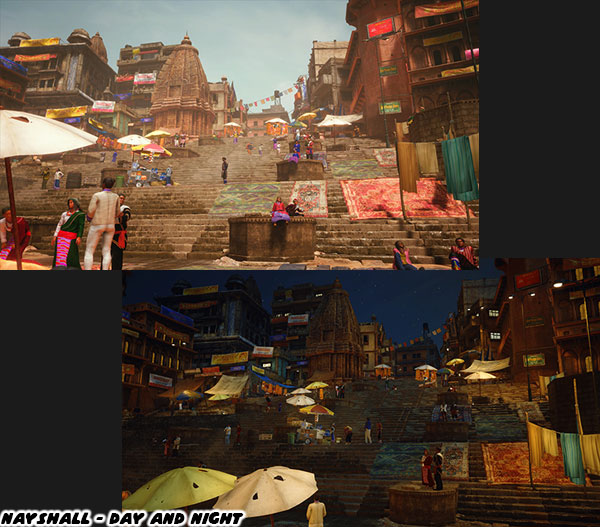
Nayshall was the complete opposite. I was happy to settle into the town, to wander the village at my leisure. It had its own atmosphere, and just like Metro City it was a different experience at night. There were vendors, citizens, kids playing, people haggling for deals. I could stare at the details for hours. As I was wandering up the stairs from the river front I told my kid that I was having a much greater time with SF6 than I ever had with GOWR. I said this place felt real, and not like a movie set at all. With that said the staging in Nayshall made every encounter look like a cinematic experience.
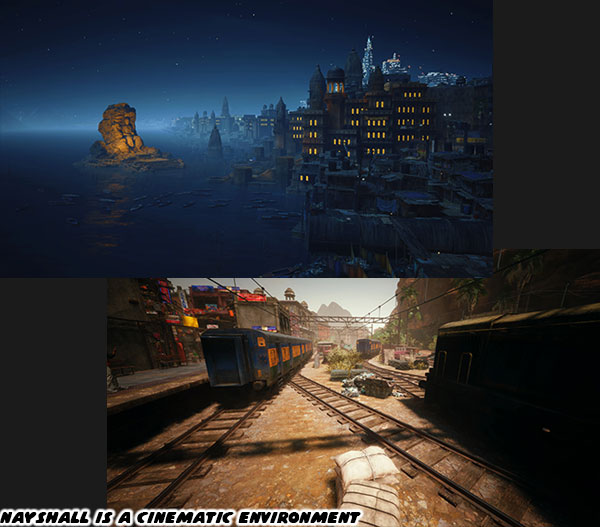
As I was wandering the town there were a few things that seemed odd to me. Not in production value. What I’m talking about were intentional details that the SF6 producers wanted you to notice. There were rail lines through the perimeter of the city, but no running trains. In fact one of the rail bridges was collapsed. I’ve never been to India, or Nepal, but I do remember seeing videos of packed trains, with people hanging on the outside of the cars, and riding on the roof as well. These things were seen in the India stage in SFV. I thought it was kind of weird to take it away in a town that was India adjacent. The residents said that with a new city hub being built they had no more need for trains.
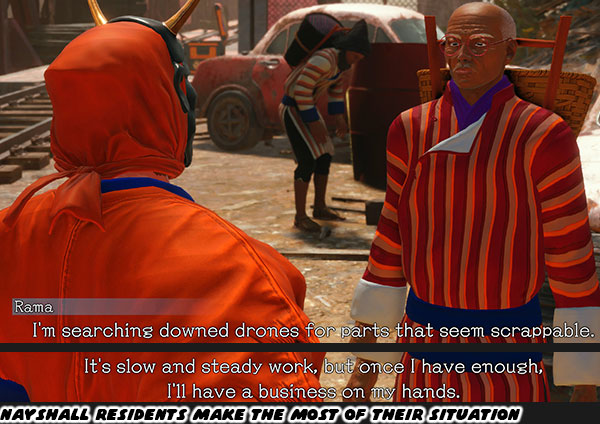
The other thing I noticed were the people digging through trash piles. Some of the residents had given up their life as shepherds, and found themselves making a quick buck searching for drone parts. Some of the people were finding new lines of work, and looking forward to being brought into the 21st century. There were some that were wondering who was really benefiting from all of this industrialization, to them it felt like the people had no choice in the matter.
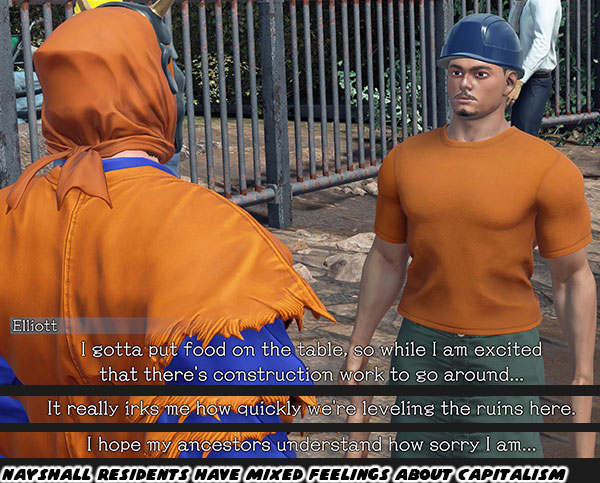
I could see why some of the people felt like they were being exploited. They were aware that they were participating in a system that relied on cheap labor. A system that benefited those at the top far more than the working class. I didn’t realize how bad it was for the bottom of society until more of the map had opened up. The Lowlands of Nayshall was a world built in the ruins of industrialization. We will look deeper into the roots of the resistance in the next blog. I hope to see you back for that. If you are a long time fan of Final Fight, or Street Fighter then I would like to hear your impressions of SF6. If you have never played any game previously then tell me your experiences in the comments section please. As always if you would like to sponsor me
please visit my Patreon page and consider donating each month, even as little as $1 would help make better blogs and even podcasts!






















No comments:
Post a Comment